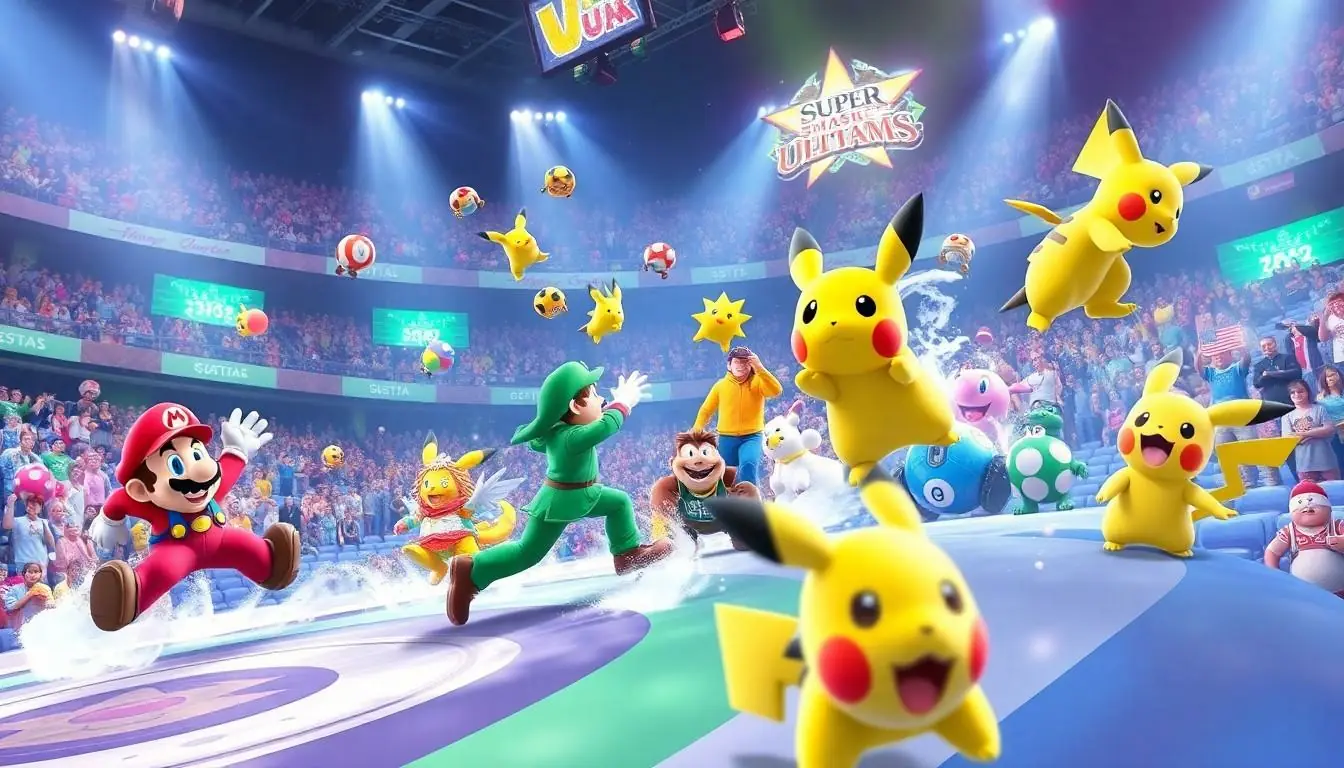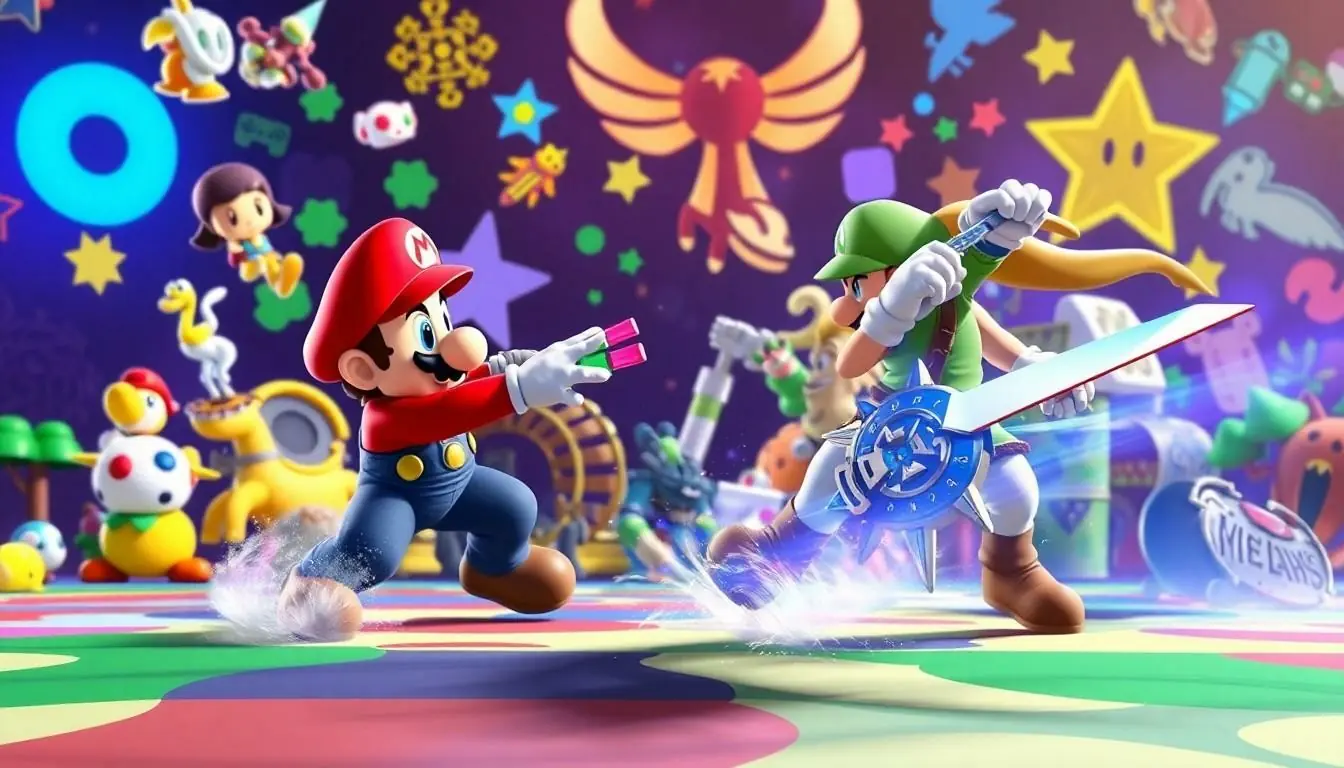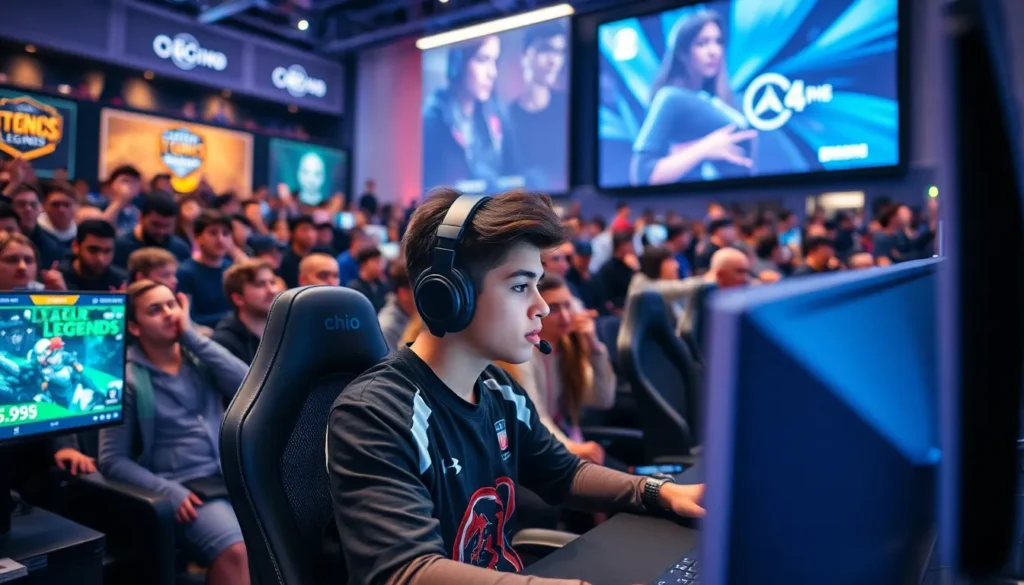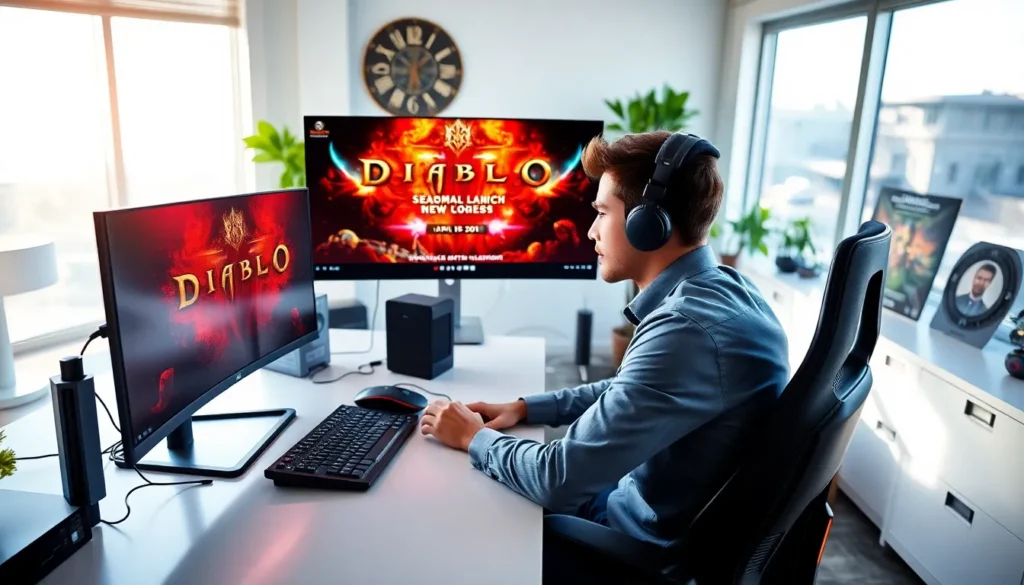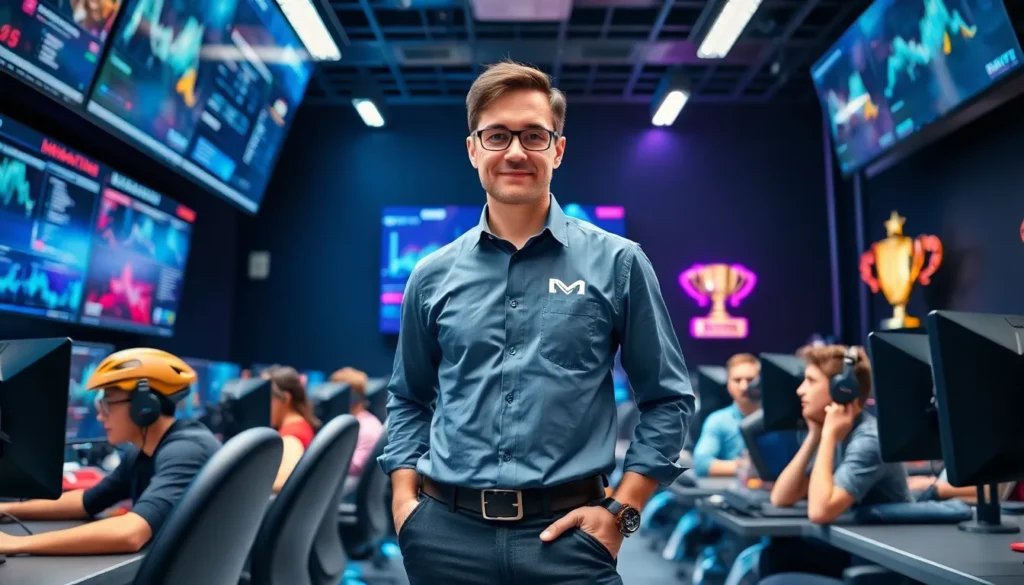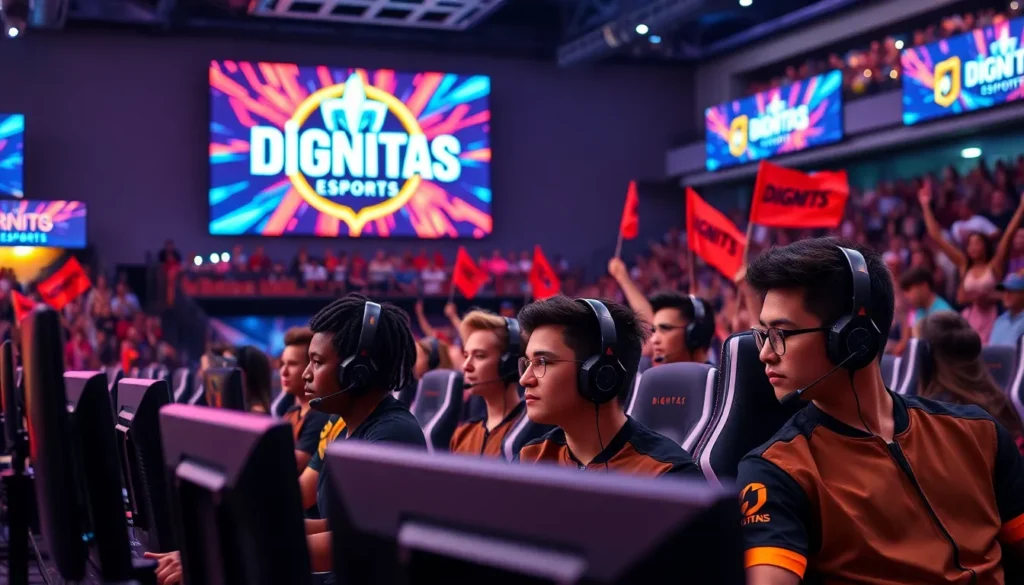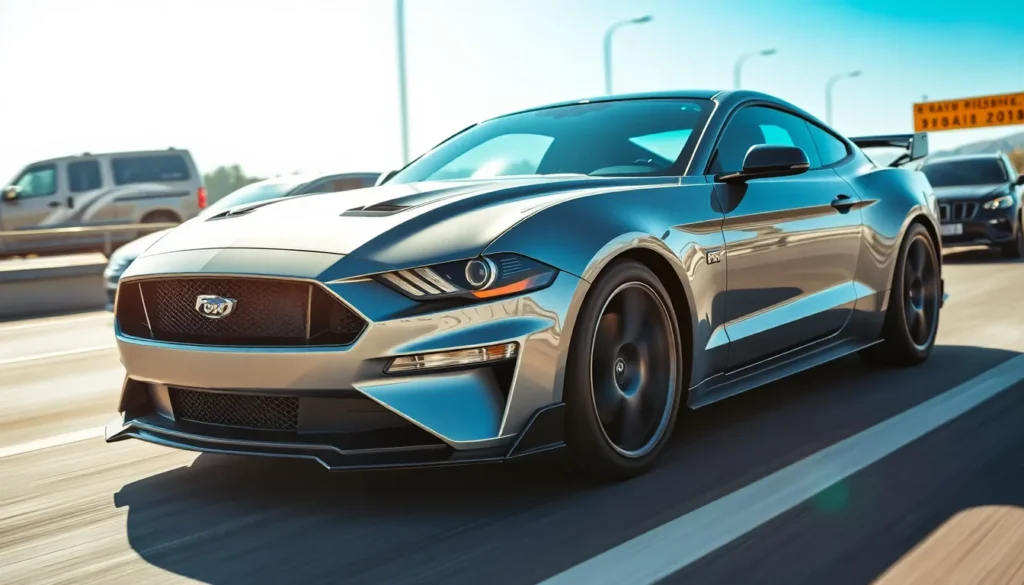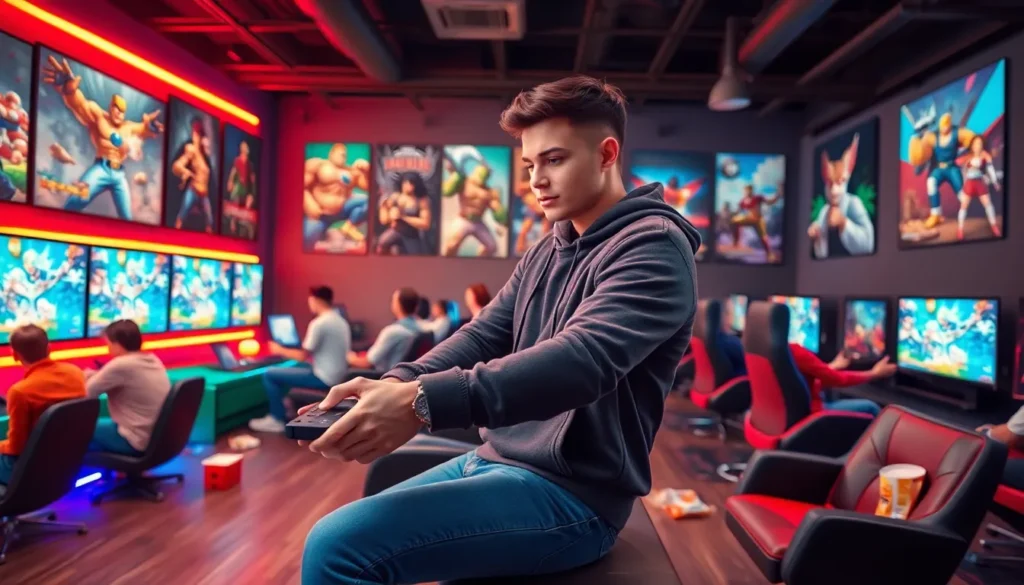In the vibrant world of gaming, few titles pack as much punch as Super Smash Bros. Ultimate. This iconic franchise has evolved into a colossal celebration of gaming history, blending beloved characters and unforgettable battles into one electrifying package. Whether you’re a seasoned fighter or a curious newcomer, the background of this game is as rich and layered as a triple-decker sandwich—just without the calories.
From its humble beginnings to the sprawling roster it boasts today, Super Smash Bros. Ultimate isn’t just a game; it’s a cultural phenomenon. Dive into the whirlwind of nostalgia, fierce rivalries, and the occasional banana peel slip-up. Get ready to explore the fascinating journey of how this game became the ultimate brawler that has fans shouting “Game on!” from their living rooms to the tournament stage.
Table of Contents
ToggleOverview of Super Smash Bros Ultimate
Super Smash Bros. Ultimate launched on December 7, 2018, establishing itself as a cornerstone in the fighting game genre. The title showcases over 80 characters, representing franchises like Mario, The Legend of Zelda, and Pokémon. Enthusiasts appreciate the game for its extensive roster, which combines fan-favorites and newcomers alike.
Gameplay across various modes delivers fast-paced action, from classic battles to team-based skirmishes. Different game mechanics, such as Final Smashes and items, enhance strategic depth and variety. Competitive players enjoy the balance and precision, making it suitable for both casual and tournament-level play.
Various stages offer unique environments that reflect iconic series. Environments include classic locations like Battlefield and Final Destination, alongside newcomers like Pokémon Stadium 2. Players often interact with these dynamic settings for an immersive experience.
The game’s art style resonates with diverse audiences, blending familiar designs with vibrant visuals. Character animations and special effects appear polished, contributing to the overall presentation. Soundtracks incorporate iconic themes, further enhancing the nostalgic feel of the game.
Community engagement levels remain high, driven by online tournaments and local gatherings. Fan discussions often revolve around character tier lists and strategies, sparking friendly debates. Players frequently share clips of their gameplay, showcasing skills and creative plays.
The game represents a culmination of decades of history and fan service, appealing to millions worldwide. Devotion to continuous updates keeps the community active, with new characters, stages, and balance changes regularly introduced. Super Smash Bros. Ultimate has solidified its place as a defining title in gaming culture.
The Evolution of the Franchise
The Super Smash Bros. franchise showcases significant milestones that trace its development. Launched in 1999, Super Smash Bros. introduced players to its unique crossover concept. Each installment built upon its predecessor, enhancing gameplay and character variety. Super Smash Bros. Melee, released in 2001, is often hailed as a classic, particularly for its competitive scene. In 2008, Brawl introduced online play, broadening its audience. The launch of Super Smash Bros. for Nintendo 3DS and Wii U in 2014 marked the franchise’s move to handheld gaming. Finally, Super Smash Bros. Ultimate debuted in 2018, uniting every character from previous games, emphasizing its legacy.
Gameplay mechanics have seen numerous enhancements over the years. Super Smash Bros. Ultimate introduced impactful changes like improved aerial combat and faster movement speeds. Players enjoy mechanics like the new Super Meter that adds strategic depth to battles. Final Smashes now offer unique cinematic finishes, elevating the excitement. The inclusion of more diverse stages allows for varied battle experiences. Most importantly, continuous balancing updates ensure a competitive environment. Each adjustment fuels player engagement and maintains game relevance within the eSports community.
Visual and Audio Design
Visual and audio design plays a crucial role in the experience of Super Smash Bros. Ultimate. Its graphics and sound elevate gameplay while enhancing immersion and excitement.
Graphics and Art Style
Vibrant graphics define Super Smash Bros. Ultimate’s visual appeal. High-definition character models showcase intricate details, making each fighter visually distinct. Iconic environments come to life with dynamic elements, capturing the essence of their respective franchises. Lighting effects add depth, enhancing the overall experience. The game’s art style balances realism with a cartoonish charm, appealing to both casual players and enthusiasts. Diverse stages reflect beloved series themes, fostering nostalgia while providing unique gameplay settings.
Soundtrack and Audio Effects
Diverse soundtracks contribute to the game’s engaging atmosphere. Iconic music tracks from various franchises create an exhilarating backdrop for battles. Players enjoy a mix of remastered classics and original compositions, catering to a wide range of musical preferences. Audio effects enhance the intensity of combat, from the satisfying sounds of hits to character voice lines that add personality. Attention to detail in sound design ensures players remain immersed in the action. The overall auditory experience mirrors the excitement and nostalgia that Super Smash Bros. Ultimate embodies.
Character Roster and Backgrounds
Super Smash Bros. Ultimate features an extensive character roster, showcasing both iconic returning fighters and exciting newcomers. This diverse collection appeals to players from all backgrounds.
Returning Characters
Returning characters play a significant role in maintaining continuity and nostalgia. Over 70 established fighters, including Mario, Link, and Pikachu, return from previous titles, allowing fans to relive cherished moments. Each character maintains their unique abilities, providing familiar gameplay for veterans. Several enhancements, such as refined mechanics and improved visuals, elevate their presence. Players enjoy recognizing favorite moves and strategies while engaging in fast-paced combat. This blend of nostalgia and innovation keeps returning characters vital in the competitive landscape.
New Additions and Their Origins
New additions enrich the game with fresh perspectives and unique styles. Fourteen newcomers, including characters from franchises like Fire Emblem and Splatoon, expand the gameplay experience. These fighters introduce distinctive abilities that alter strategies and tactics. For example, Inkling utilizes ink mechanics to gain advantages, while Ridley brings powerful mobility and attacks. Each character’s backstory adds depth, originating from beloved franchises with dedicated fanbases. This careful selection of new characters ensures broad appeal, inviting players to explore varied techniques and styles during battles.
Stages and Environments
Stages in Super Smash Bros. Ultimate play a pivotal role in shaping the gaming experience, each designed to reflect unique settings from various franchises. Environments like Final Destination offer a flat, no-frills battle arena, ideal for competitive play, while platforms create dynamic interaction opportunities.
Cloud Sea of Alrest presents an ethereal beauty while adding obstacles to combat, enhancing strategic gameplay. Iconic stages like Dream Land invite nostalgia, with familiar features that resonate with fans of the Kirby franchise. Each competitive mode showcases distinct attributes, forcing players to adapt their strategies based on the chosen stage.
The inclusion of Battlefield offers a balanced battleground, popular among tournament players for its straightforward layout. Smashville adds a rotating platform, keeping players on their toes, fostering creativity during battles. Various themed stages feature environmental hazards that can shift the tide of a match.
Seasonally themed stages introduce unique visual elements, immersing players in diverse atmospheres. The inclusion of Pokémon Stadium transforms into a battle arena inspired by the Pokémon franchise, emphasizing adaptability as it changes formats throughout the match. Super Smash Bros. Ultimate meticulously integrates soundscapes and visual aesthetics, merging gameplay and ambiance seamlessly.
Players experience vibrancy through detailed graphics and animated backgrounds, fostering an immersive gaming atmosphere. The environments resonate with specific franchise themes, enriching the overall experience. Each stage reflects creativity and homage, making battles enjoyable and engaging across all modes.
Competitive Scene and Community
Super Smash Bros. Ultimate fosters a vibrant competitive scene, drawing players from diverse backgrounds. Tournaments worldwide showcase elite gameplay, with events like Evo and Smash World Tour highlighting the game’s importance in the eSports arena. Players often choose characters based on unique strengths and playstyles, creating dynamic matchups and exciting viewer experiences.
Community engagement thrives through online platforms, where players share strategies and gameplay techniques. Local communities regularly host tournaments, providing opportunities for friendly competition and skill development. The support from dedicated fan bases further strengthens the competitive landscape, with forums and communities facilitating discussions around character tactics and game mechanics.
As of 2023, major events attracted thousands, with top players competing for substantial prize pools. The game’s consistent updates ensure balance, fostering a fair environment for competitors. Additionally, content creators play a crucial role in promoting the game and celebrating community achievements. Streamers and YouTubers bring enthusiasm to the player experience while showcasing high-level play.
Connecting players across the globe, online matchmaking enhances accessibility to competition. Players naturally rank up through skill-based matchmaking, allowing them to test their abilities against various opponents. This competitive infrastructure encourages continuous improvement, making every battle an opportunity for growth.
Moreover, grassroots efforts always promote local tournaments, making them essential for budding competitors. These smaller events often serve as stepping stones, allowing newcomers to gain experience and integrate into the higher tiers of competitive play. Together, the community’s dedication and the competitive framework ensure Super Smash Bros. Ultimate remains a cornerstone in the fighting game genre.
Conclusion
Super Smash Bros. Ultimate stands as a monumental achievement in the gaming landscape. Its blend of nostalgia and innovation captivates players of all skill levels. The game’s expansive character roster and dynamic stages create an engaging experience that keeps the community thriving.
With continuous updates and a vibrant competitive scene, it’s clear that Super Smash Bros. Ultimate isn’t just a game; it’s a cultural phenomenon that unites players across the globe. As it evolves, its impact on gaming culture and community engagement will undoubtedly endure, ensuring its legacy for years to come.

